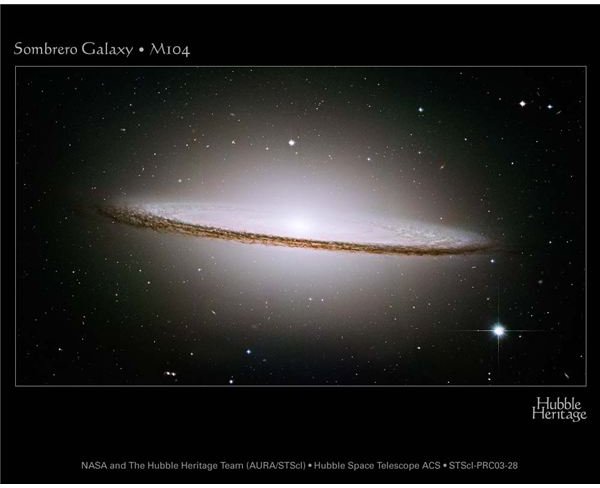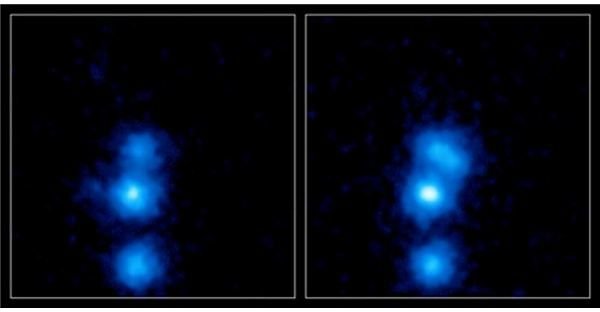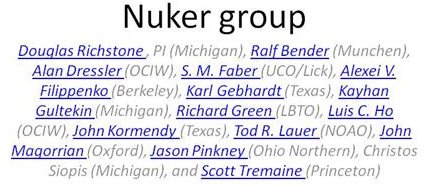Supermassive Black Holes as Discovered by The Nuker Group
The Nuker Group and Their Initial Work
The Nuker Group began its work to understand why galaxies with active galactic nuclei (AGN)—that is quasars—were so bright and emitted such prodigious amounts of energy and radiation. AGN galaxies are the brightest objects in the Universe. When first detected, they were a mystery, and called quasars. It was the Hubble that enabled astronomers to discern these mysterious objects were galaxies formed at the early stage of the universe.
The Group called themselves Nukers because they were studying the nuclei of galaxies, and also because he term “Nuker” is a reference to the “Nuker Law”, which is a description of the inner few (~3-10) arcseconds of predominantly nearby (< 30 Mpc) early-type galaxy light-profiles. The Nuker Law was described first by members of the Nuker Group.
The group wanted to find out what made AGNs so active. They had a theory. The only object in the Universe known to be able to generate that kind of energy was an object that swallowed all the energy, and mass, around it—a black hole. But a black hole to produce a quasar—AGN—had to be huge, more massive than anything previously considered.
Their calculations said such a black hole would have to have a mass of several hundreds of millions solar masses. But that would give them a way to find it, if it existed. Of course, they could not see the black hole—light cannot escape from its grasp. But the stars circling around it would be moving at incredible speeds as they spiraled to their ultimate end when the black hole pulled them into its craw. The group’s math predicted the nearest stars would be moving at 150,000 mph.

Using the Hubble, the Palomar telescope and the Keck telescopes, and later the Chandra and Spitzer space telescopes, the group selected several AGN galaxies. Their theory proved correct. The central stars were whizzing around an invisible center at 150,000 mph…and more. In some, the stars were circling at 300,000 mph. That would require a black hole with a mass of billions of solar masses.
They studied more AGN galaxies. All exhibited the same evidence of supermasssive black holes.

Checking the Evidence
Like all good scientists, the group was nervous to trust their discoveries without a control. So they decided to look at a galaxy that was not active to have a comparison. The easiest non-active galaxy to check was our nearest neighbor, Andromeda.
Surprise, surprise, Andy!
The stars at Andromeda’s center are whizzing around at 150,000 mph. It contains a supermassive black hole! But, why is it not active?
Perhaps it’s just an anomaly. So the Group looked at other non-active galaxies.
More surprises. Every galaxy they have examined, and by now it’s in the hundreds, contains a black hole, most of them of the supermassive variety. Yet most are not active.
It appears that the central black hole eventually absorbs all the stars around it, and shuts down. The galaxy becomes inactive. But it will not stay that way for eternity. We will talk about that later.
Connections
If all galaxies have black holes, most supermassive, what is the connection between the black hole and the galaxy? This is the question that harassed the Nuker group as they worked through their findings. The answer blew the top off cosmological thinking.
In their equations, there is a factor called sigma. This one factor related the mass of the black hole to the mass of the galaxy. In all the hundreds of galaxies they studied, active and non-active, sigma always came out to the same relationship. The mass of the black hole was always ½ of one percent of the total mass of the galaxy.
Clearly, there was some connection.
And sigma uncovered another stunner. The stars at the outer reaches of a galaxy, such as our Sun in our Milky Way galaxy, are too far away from the central black hole to be influenced by its gravitational pull. The speed of their rotation should have no relationship to the speed of the central stars.
Yet, sigma showed stars in the outer reaches of every galaxy studied rotated around the center at a specific fraction of the speed of the central stars.
The central black hole had some major influence on the development of its galaxy.
Final Conclusion
Sherlock Holmes said, “When you have eliminated the impossible, whatever is left, however improbable, is the truth.”
That’s where the Nuker Group found themselves. The evidence was overwhelming. The exact relationship between the black hole’s mass and its galaxy’s mass—the relationship between the speed of the stars in the galaxy’s outer reaches and those in the center core—this could not be ignored.
The only explanation was that the black hole created the stars and the galaxy. How? Here is the Group’s postulated theory.
In the very early universe, before there were stars and galaxies, the hydrogen gas that permeated space formed into massive clumps. The gas tended to concentrate toward the center, and begin to spin. After several million years, the center of the gas cloud became extremely massive. At some point it became so massive it collapsed into a black hole. The gas surrounding the black hole, as it was sucked into oblivion, began spinning ever faster. As it spun, friction heated it up to several million degrees. It began to form stars, and the formation of a galaxy had begun.
More recent findings indicate rather than the hydrogen gas, it may have been dark matter that collapsed to form the huge black holes that formed the galaxies. Either way, the result is the same.
Even the gas at the outer edge of the cloud was set in motion by the spinning of the central core. As the black hole sucked in more gas, it became more massive and more powerful. It pulled the embryonic stars into its craw. At some point, it became so massive and so powerful the stars and gas spinning around it at the accretion disk generated huge amounts of radiation and energy. The forming galaxy had become an AGN—a Quasar.
As we noted, the active stage continues for millions of years, but eventually the black hole eats all the nearby stars and quiets down, perhaps for billions of years. But eventually it will sweep more stars into its lair, and begin to produce energy again as a quasar.
Remember the group studying Andromeda (M31) as an inactive galaxy? In 2006, Chandra detected that M31 had flared to 100 times its previous brightness. It has since calmed down—to 10 times its previous activity. Is our neighbor about to go to the AGN stage again?

If it Does?
What happens in a galaxy if its nuclei goes active again? The energies and radiation generated around the accretion disk are so intense, they propagate throughout the galactic disk, even to the outer edges. Solar systems even there are fried by massive doses of radiation. If that happened in our Milky Way, our Solar System, as far away as it is from the central core, would be left lifeless.
M31’s black hole is about 30 million solar masses. The black hole at the Milky Way’s core is about 3 million solar masses, so we have nothing to worry about.
Or so we thought before the Nuker Group turned the Keck telescopes on the Milky Way’s center core. What they found was another shocker.
There’s not just the one black hole. There are four orbiting each other. At some time hundreds of millions or billions of years from now, they will begin to merge, and the Milky Way will become an AGN again.
A Breakthrough in Galactic Knowledge
The discoveries of the Nuker Group have totally changed our understanding of galaxy formation and evolution. Their research into supermassive black holes demonstrates how when science starts out on one path, it can end up at a totally unexpected destination.
Sources
University of Texas https://www.as.utexas.edu/astronomy/research/group_extragal.html?a=61
University of Texas https://blackholes.stardate.org/resources/articles/article.php?p=birth-of-black-holes
University of Texas https://blackholes.stardate.org/
Discovery Science Channel
BBC https://www.bbc.co.uk/science/horizon/2000/massivebholes.shtml
BBC https://www.bbc.co.uk/science/horizon/2000/massivebholes_transcript.shtml
Credits
Members of Nuker group: Self generated
M31 flareup: University of Texas https://blackholes.stardate.org/news/m31-gets-frisky.php
Sombreo galaxy: University of Texas https://chandra.as.utexas.edu/~kormendy/bhpix.html
NGC4261: NASA
